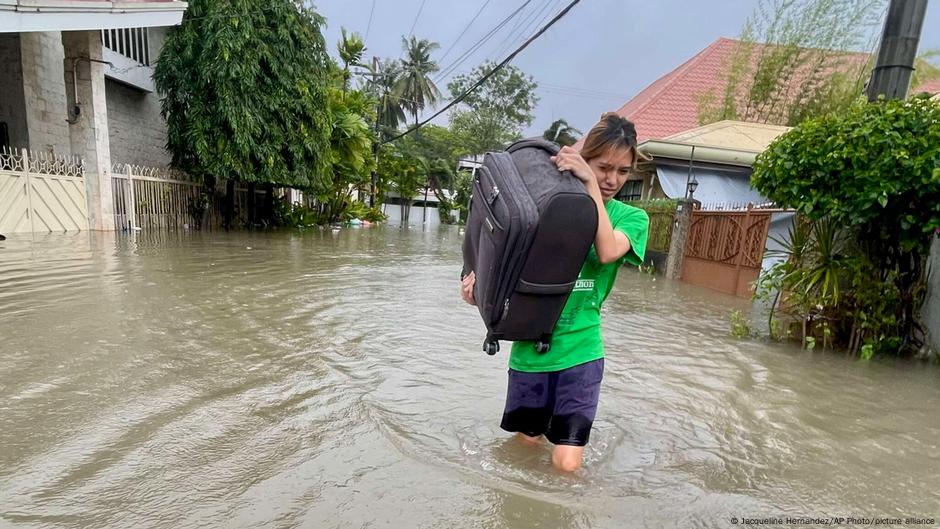
"The typhoon, locally known as Tino, made landfall around midnight in the eastern province of Southern Leyte and also hit Cebu, where residents were still reeling from a powerful earthquake that struck the province last month. The typhoon had sustained winds of up to 140 kilometers (87 miles) per hour and gusts of up to 195 kph (121 mph) as of Monday afternoon. Kalmaegi is forecast to move across the Visayas Islands region and out over the South China Sea by Wednesday."
"Gwendolyn Pang, secretary-general of the Philippine Red Cross, said people were trapped on their roofs by floodwaters in the coastal town of Liloan in Cebu province. In Cebu's city of Mandaue, floodwaters reached "up to the level of heads of people," she said, adding that several cars were either submerged in floodwater or floated in another Cebu community. More than 160 flights to and from affected areas were canceled. Those at sea were advised to head to the nearest safe harbor immediately and stay in port."
Typhoon Kalmaegi made landfall around midnight in Southern Leyte and struck Cebu, carrying sustained winds up to 140 kilometers per hour and gusts up to 195 kph. The storm killed at least two people and prompted orders for tens of thousands to evacuate across central Philippines. Floodwaters trapped residents on rooftops in Liloan and inundated parts of Mandaue, submerging or floating several cars. More than 160 flights were canceled and mariners were advised to seek the nearest safe harbor. PAGASA warned of life-threatening storm surges exceeding three meters along coastal and low-lying communities. Vietnam prepared for a worst-case impact while scientists linked intensified storms to warming ocean temperatures and amplified climate change.
Read at www.dw.com
Unable to calculate read time
Collection
[
|
...
]